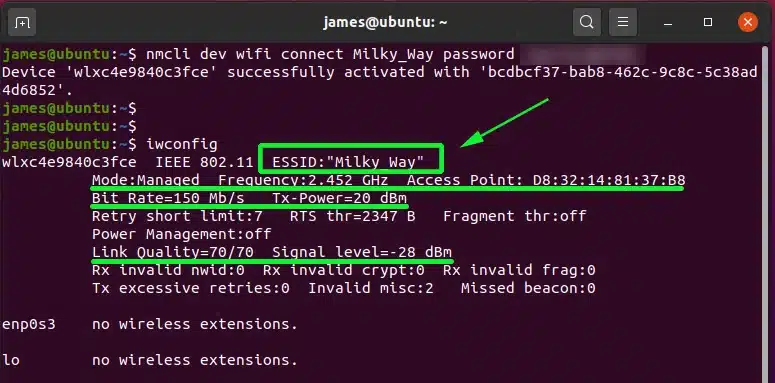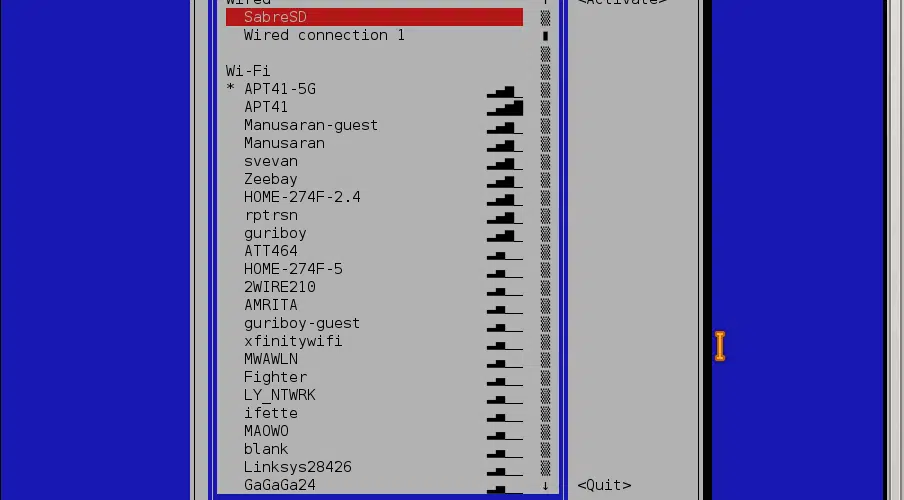Table of Contents
How to Configure a WiFi Network in the Linux Terminal:
In this article, you’ll learn how to configure a WiFi network in the Linux terminal. You’ll learn about nmcli, wpa_supplicant, and Netplan.
Then, you can use them to connect to your WiFi network. Once you’ve done that, you’ll be ready to get started.
How to configure a WiFi network in the Linux terminal:
There are two ways to configure a WiFi network on a Linux system: via the GUI or using the command line.
The GUI is much easier to use, but it requires root privileges. In the Linux terminal, you can create a psk string (a security key generated by wpa_passphrase) and then use it to connect to the network.
The first way is to enter the SSID or name of the network you are trying to connect to. You can also specify the password, either WPA or WEP.
If you don’t want to show the password, you can also use the –ask the option to hide it. After the command is completed, your device should be connected to the internet. NetworkManager will store this connection and will automatically connect to the network on reboot.
Using wpa_supplicant:
If you’re a Linux command-line user, you might be wondering how to configure WiFi on your system. The good news is that several command-line utilities are available for this purpose.
The wpa_supplicant utility is among them. This command-line utility is available for all major Linux distributions. All you need to get started is a Linux installation with root privileges and a compatible wireless network adapter.
In order to use wpa_supplicant, you must first install the correct driver. In Linux, you can find it in the Linux-its kernel package. It can also be found in the Linux-edge kernel package. Depending on your device, you might need to install firmware separately.
Using nmcli:
You can use NetworkManager to switch between networks. To do this, use the NetworkManager interactive editor.
It has a menu-driven interface that shows you which settings and properties are available for editing. The editor also provides in-line help. It lists all NetworkManager settings and properties, as well as examples of editor sessions.
Using nmcli is an alternative to the NetworkManager GUI and provides similar functionality. However, it’s designed for interactive use only, and it’s not recommended for non-interactive tasks.
In addition, there are a few settings that you should consider before using it. For example, if you’re using it to connect to WiFi networks, you should first create a password.
Using Netplan:
Before you begin, you should understand some basic network terminology. If you are an experienced user, you may want to skip this section. DHCP stands for Dynamic Host Configuration Protocol, which dynamically assigns IP addresses.
You should also be familiar with YAML, a text format used to serialize data. Static routing refers to manually assigning IP addresses.
Netplan is an Ubuntu-based networking utility that reads config files from the /etc/netplan directory. It uses the network as the backend. In the desktop environment, you can also use Network Manager to manage your network. Regardless of which network manager you use, Netplan configuration is similar.
Using it Connect to WiFi Linux terminal:
Using it is a useful command for testing whether a WiFi network is up and running on Linux. It allows you to see if the wireless interface is working by reading the packets that are sent to it and receiving them.

In addition, it lets you clear the mask if necessary. It also lets you adjust your TX bitrates, including legacy, HT MCS, and dynamic power save.
To use it on a Linux system, first, connect to the network and enter the device name. Then, use the IP command to turn on the network.
After entering these commands, you should be prompted with the iwctl command. The device name will be displayed in the device list.
Using wpa_cli:
You can use the wpa_cli command to connect to a WiFi network in Linux. The tool is a daemon, which runs in the background.
It generates a configuration file with the pre-shared key of the network. To connect to the network, you must first specify the IP link output (wl) and the security protocol (WPA, WPA2, or WPA2-PSK).
Using wpa_cli is easy and doesn’t require root privileges. All you need is a working Linux installation, a compatible wireless network adapter, and a working installation of wpa_supplicant.





Add comment